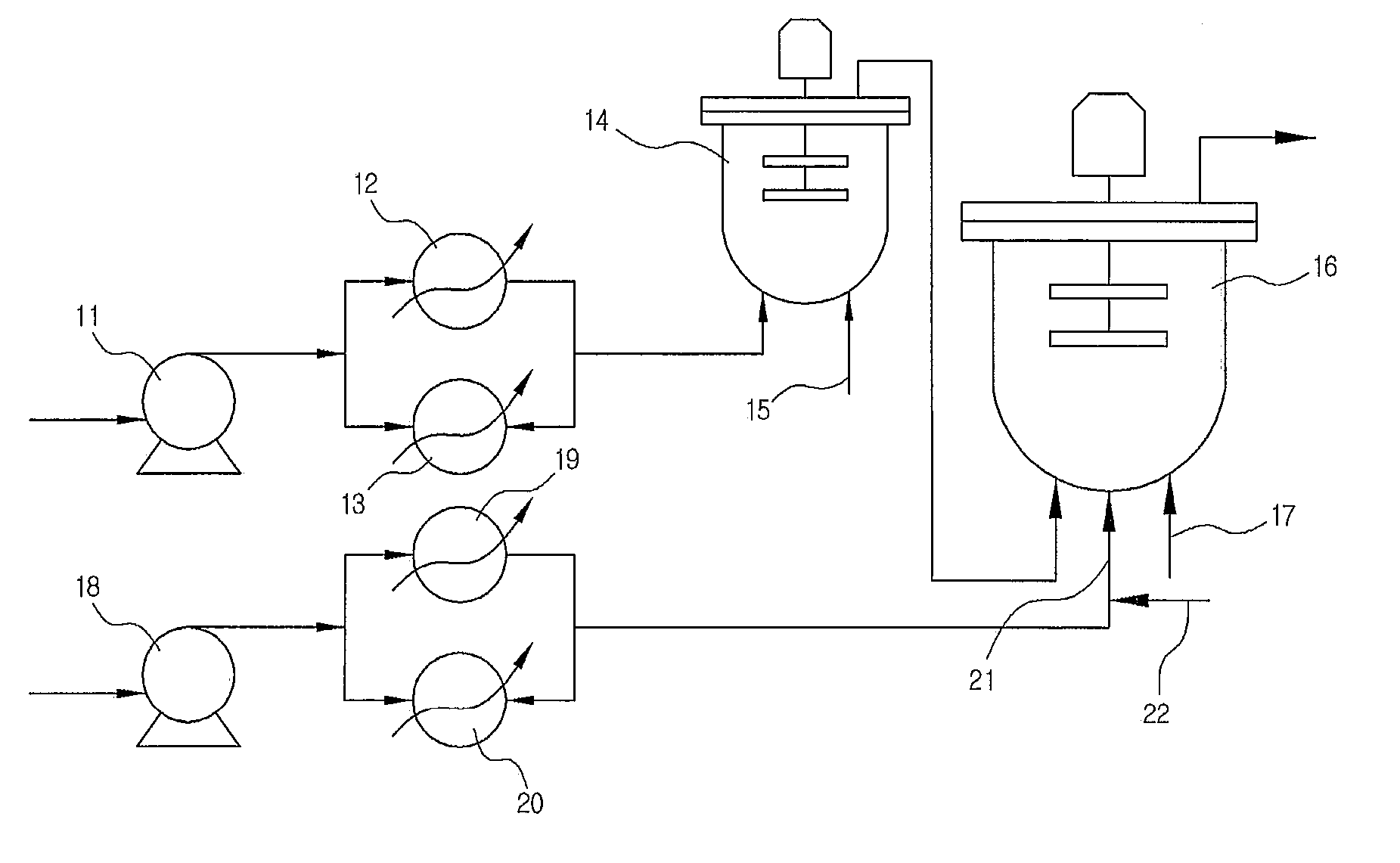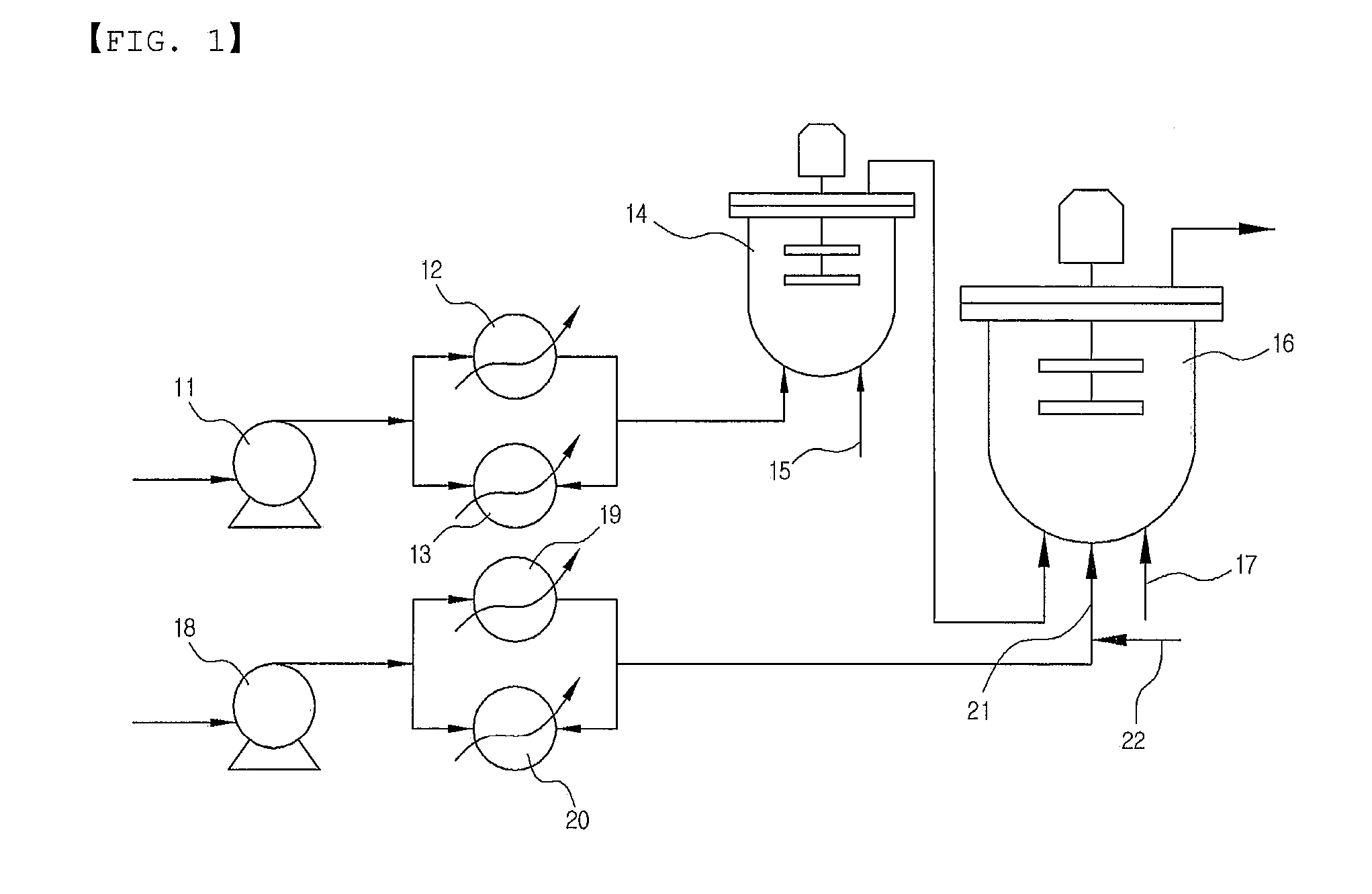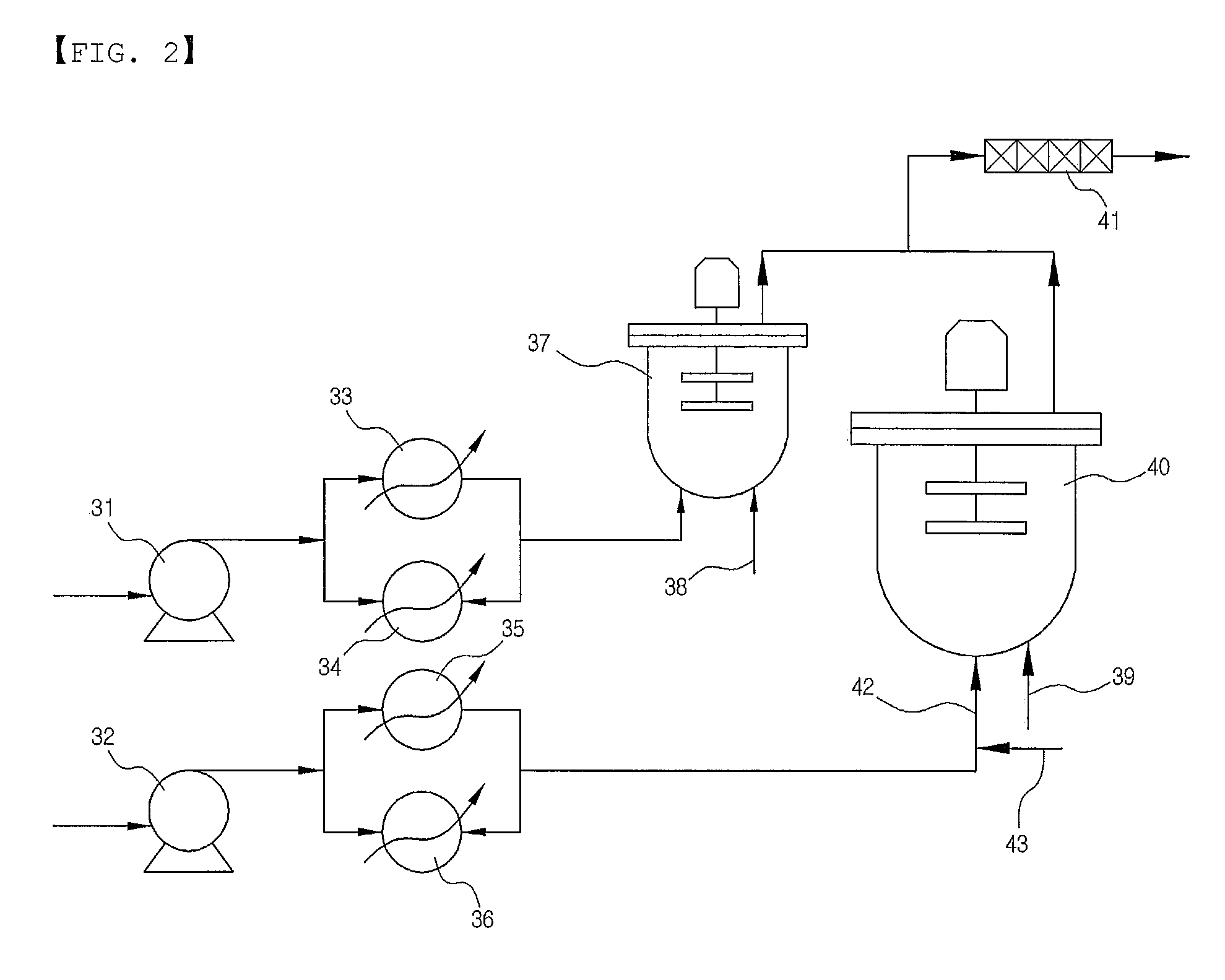Ethylene Copolymer with Improved Elasticity and Processibility
- Summary
- Abstract
- Description
- Claims
- Application Information
AI Technical Summary
Benefits of technology
Problems solved by technology
Method used
Image
Examples
preparation example 1
Synthesis of bis (2-phenylphenoxy)(pentamethylcyclopentadienyl)titanium(IV) chloride
[0129]2-Phenylphenol (1.72 g, 10.1 mmol, Aldrich 99%) was fed into a dried flask and dissolved in 40 mL of toluene, and then cooled to 0° C. while well stirring. The resulting mixture was slow added dropwise to N-butyl lithium (4.8 mL, 2.5M hexane solution, Aldrich). After adding dropwise was finished, the temperature of the resulting mixture was maintained for 1 hour and then raised to room temperature, followed by stirring for 12 hours. The temperature of the resulting mixture is decreased to 0° C., and then a solution of pentamethylcyclopentadienyltitanium trichloride (1.64 g, 5.5 mmol) dissolved in 10 mL of toluene was slowly added dropwise thereto. After adding dropwise was finished, the temperature of the resulting mixture was maintained for 1 hour and then raised to room temperature, followed by stirring for 1 hour. The temperature of a reactor was raised to 90° C., followed by reaction for 12...
examples 1 to 6
[0133]Bis (2-phenylphenoxy)(pentamethylcyclopentadienyl)titanium(IV) chloride synthesized in the preparation example 1 was used as a single activation point catalyst, that is, a transition metal catalyst, in the second stage reactor connected in serial. The usage amounts of catalyst are shown in Table 1. Ti represents a single activation point catalyst, and as a cocatalyst, Al represents triisobutylaluminum and B represents triphenylmethyliniumtetrakispentafluorophenyl borate. Respective catalysts were dissolved in xylene at a concentration of 0.2 g / L, 5.0 g / L or 1.5 g / L, respectively, followed by injection. Synthesis was performed by setting an ethylene feed ratio to 4:6 and using 1-octene or 1-butene as a comonomer for each reactor. However, the amount of ethylene to be fed into the second stage reactor was determined considering the amount of unreacted ethylene flowing into the second stage reactor when the conversion rate is low in order to adjust the polymer density and molecul...
examples 7 to 14
[0136]Bis (2-phenylphenoxy)(pentamethylcyclopentadienyl)titanium(IV) chloride synthesized in the preparation example 1 was used as a single activation point catalyst in the second stage reactor connected in serial. The usage amounts of catalyst are shown in Table 2. Ti represents a single activation point catalyst, and as a cocatalyst, Al represents triisobutylaluminum and B represents triphenylmethyliniumtetrakispentafluorophenyl borate. Respective catalysts were dissolved in xylene at a concentration of 0.2 g / L, 5.0 g / L or 1.5 g / L, respectively. Synthesis was performed by setting an ethylene feed ratio to 3.5:6.5 to 4.5:5.5 and using 1-octene as a comonomer for each reactor. However, the amount of ethylene to be fed into the second stage reactor was determined considering the amount of unreacted ethylene flowing into the second stage reactor when the conversion rate is low in order to adjust the polymer density and molecular weight in the first stage reactor. The conversion rate i...
PUM
| Property | Measurement | Unit |
|---|---|---|
| Density | aaaaa | aaaaa |
| Density | aaaaa | aaaaa |
| Energy | aaaaa | aaaaa |
Abstract
Description
Claims
Application Information
 Login to View More
Login to View More - R&D
- Intellectual Property
- Life Sciences
- Materials
- Tech Scout
- Unparalleled Data Quality
- Higher Quality Content
- 60% Fewer Hallucinations
Browse by: Latest US Patents, China's latest patents, Technical Efficacy Thesaurus, Application Domain, Technology Topic, Popular Technical Reports.
© 2025 PatSnap. All rights reserved.Legal|Privacy policy|Modern Slavery Act Transparency Statement|Sitemap|About US| Contact US: help@patsnap.com



